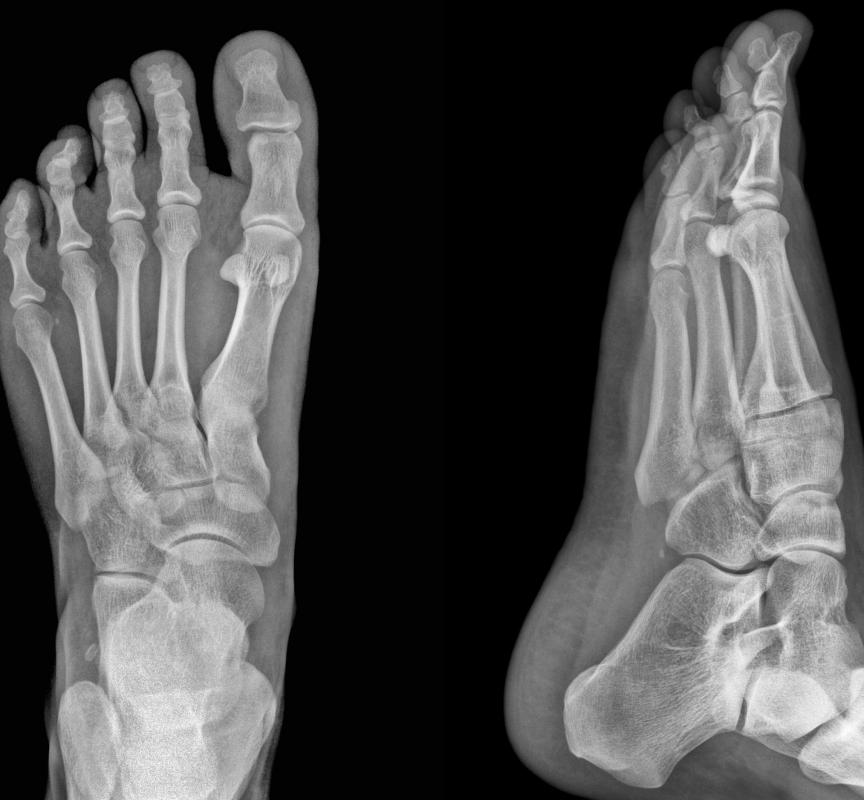At WiseGEEK, we're committed to delivering accurate, trustworthy information. Our expert-authored content is rigorously fact-checked and sourced from credible authorities. Discover how we uphold the highest standards in providing you with reliable knowledge.
What is a Diabetic Wound?
Doctors do not fully understand why some patients with diabetes will eventually develop a diabetic wound, but it is most common in those with neuropathy. Diabetic wounds generally come in the form of an ulcer, usually on the feet and lower extremities. This could be partially caused by neuropathy in the feet, which can cause tingling, burning, and eventually a full loss of feeling in one or both feet. When feeling is lost, patients often can’t tell when a foot has been cut, punctured, or even broken. While this is one theory, it is has also been found that the vast majority of diabetic wound sufferers have a magnesium deficiency. Supplements or eating magnesium-rich foods may offer moderate relief.
Before a diabetic wound can be effectively treated, doctors must first determine the extent to which the area has been damaged. Blood flow in the affected area is tested because proper circulation is vital to healing. X-rays or magnetic resonance imaging may also be performed to determine if the wound has extended beyond the surface to affect muscle or bone tissues. Knowing these things up front can help determine how well a wound may heal. In some cases, the wound may not be treatable, and the limb will need to be amputated.

Treatment for diabetic wounds includes removing all infected or dead tissue from the area and cleaning it with a saline solution. The wound is then covered to prevent contamination or infection from outside sources. Nearly any kind of medical dressing can be used to cover a diabetic wound, but specialized dressing with certain medications and additions may be used for wounds that are not responding well to treatment.

Patients are also required to keep weight off the affected area as much as possible. Depending on the extent of the wound, full bed rest may be required. For less severe wounds, the patient may need to use a wheelchair, crutches, or other method for keeping weight off the wounded area. Total contact casts (TCCs) may also be used because they take almost all pressure off the wound and have an excellent success rate for healing. They are time-consuming to put on, however, and some doctors prefer a more easily removable option for frequent wound inspections.

Infection control must be monitored stringently to avoid serious complications and amputations. For most patients, getting an infection is the most dangerous circumstance of having a diabetic wound and is the factor most likely to lead to amputation and longer healing times. The wound must be kept clean and free of contaminants. When infections do occur, a broad range antibiotic should be administered to cover any potential pathogens that may have infected the wound. Very severe infections may require medications to be administered intravenously.
AS FEATURED ON:
AS FEATURED ON:

















Discussion Comments
Very informative article. Both of my grandparents had diabetes and wounds were frequently an issue. My grandmother actually had to undergo several amputations, sadly. One thing she did to keep wounds clean was use tegaderm medical dressing. They are more comfortable than your typical gauze and tape and they stay in place better than regular band aids.
What I'd like to add to this information is my personal experience conclusion regarding the healing: Diabetic-md spray worked really great as an additional aid to antibiotics and helped me to save my leg. Hope this tip would be useful.
Post your comments